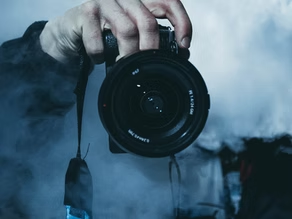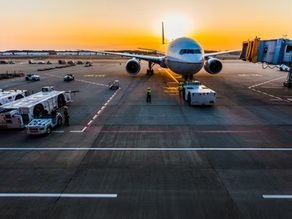7 Places In India That Are A Photographer’s Paradise!

“Photography is a way of feeling, of touching, of loving. What you have caught on film is captured forever… It remembers little things, long after you have forgotten everything.” — Aaron Siskind We are certain everyone would agree that the above quote captures the essence of photography perfectly. Photography adds so much meaning to our lives. It allows us to share our life and experiences in more profound ways. Moreover, it also helps us develop and evolve as human beings. Lastly, the art of photography has the capability of bringing you so much joy and pleasure. In this everchanging fast-paced world, there is something very satisfying about slowing down and just focusing on what is in front of you. Well, we have compiled a list of 7 intriguing as well as mesmerizing places in India that would surely feed your artistic and creative bug. 1. Leh-Ladakh Ladakh is perhaps one of the most stunning places in India, owing to its dazzling beauty. Although the climate is harsh for most parts of the year, the generosity and warmth of the people more than make up for it. The silence of the monks at Buddhist monasteries that dot the breathtaking landscape gives this region an advantage over all others in India. With elaborate carvings, a conglomeration of values, a tranquil environment, and exquisite artifacts as well as relics, these Buddhist centers, will surely leave you mesmerized. Enjoy the overcast, windy weather while exploring the different picturesque locations that define the culture of this place. It is truly a heaven on Earth. How to reach:- The most convenient way of traveling to Ladakh is by air. The nearest airport is Kushok Bakula Rimpochee Airport, located in Leh. The other way of reaching this place is by road. Two different routes lead to Ladakh- one from Srinagar and the other from Manali. However, a crucial point to remember is that both these roads become inaccessible from October/November to May. The ideal time for photography:- The perfect time for visiting Leh Ladakh is from July to September. First trip to Leh-Ladakh? Do check out Sandeepa & Chetan’s blog on this gorgeous place. 2. Varanasi Also known as Kashi (City of Life), Varanasi has always been a hotspot for travel photographers. One of the oldest living cities in the world, this sacred place has been attracting tourists for hundreds of centuries. Renowned author Mark Twain described it as “older than history, older than tradition, older even than legend.” The Ghats of Varanasi have always had a certain allure to them. A home to devotees searching for holiness and moksha (salvation), the approximately 80 ghats that border the Ganges are the heart and soul of the town. We promise you, the city and its heritage are bound to leave you wonderstruck. Moreover, the unique spirit of this region will undoubtedly remain with you long after you leave. How to reach:- Varanasi has two railway stations, the Kashi Junction and the Varanasi Junction, both of which are well-connected to the major cities in India. It is also accessible by air as well as by roads. The ideal time for photography:- The perfect time for visiting Varanasi is during winters i.e. from October to February. To know more about this beautiful city, do check out Puspendra Gautam’s informative blog. 3. Khajuraho If you are looking for a place that is an amalgamation of knowledge and aesthetic, then Khajuraho in Madhya Pradesh is the perfect destination for you. Words fail to describe the charm and elegance that this region holds. One of the grandest art structures in the country, the Khajuraho group of temples, is an excellent example of Indian architecture and heritage back in the ancient era. The eloquent portrayal of human emotions and feelings by the sculptures not only leaves everyone spellbound but also leaves them begging for more. The enchanting beauty of these temples lies in their elaborate and intricate carvings, which depict scenes from everyday life. This quaint town is a classic example of India’s rich cultural legacy. How to reach:- Khajuraho has excellent connectivity with major cities in India by road. It is also accessible by air. The Khajuraho Airport has regular flights operating from Delhi and Varanasi. Furthermore, you can also travel to Khajuraho by train. The ideal time for photography:- The perfect time for visiting Khajuraho is during winters i.e. from October to February. Want to know more? Do read Anna Phipps’s amazing blog. 4. Pelling Pelling is an ideal destination for photographers, nature enthusiasts, bird-watchers, and serenity seekers. Offering jaw-dropping views of the Himalayas and the snow-capped Kanchenjunga, Pelling, in Sikkim, is a gorgeous town with perfect misty, cloudy weather – all the things that an excellent Indian holiday wishes to have. With charming houses built atop wooded ridges, this hill town is not only surrounded by panoramic natural forests but is also home to stunning heritage structures like ancient monasteries as well as breathtaking waterfalls like the Kanchenjunga falls and the Changey Waterfall. If you get a chance, do visit the annual Khangchendzonga Festival. It sees activities like kayaking, trekking, traditional sports, and birdwatching. In addition to this, the festival also witnesses a flower exhibition, which is a colorful and vibrant affair. All in all, this scenic town is a perfect holiday destination for scenery lovers and adventure buffs. How to reach:- With no railway station or airport close by, reaching Pelling isn’t an easy task. The best way to reach Pelling is by taking a bus or hiring a taxi since it has excellent road connectivity with other cities in Sikkim. The ideal time for photography:- The perfect time for visiting Pelling is during winters from February to July. However, if you would like to capture the snowy landscapes, November to January is when you should travel to Pelling. Do give Jade’s blog a read to know more about this stunning place. 5. Diu Having an old-world charm and
Airport Procedures For Travel From India To UAE During The Covid-19 Pandemic

Normally a visit to another country involves that small sense of excitement in anticipation of what is to come. However, during these tough times, traveling during the Covid-19 pandemic is an experience that needs to be tackled with the utmost caution, adhering to all possible safety measures to avoid contracting the virus. Airports are, after all, a hotbed for huge gatherings, compounded by the fact that passengers might even be in transit to a third destination. There is a lot of confusing, and often contradictory, information out there regarding the procedures to be followed as well as the availability of flight tickets, things to be done, and even the list of nationalities permitted to enter certain countries. This blog details my journey from Chennai, India to Dubai, UAE, on the 19th of August, 2020. Pre-travel to-do List The very first thing that you need to ensure is the availability of flights to your destination. A large number of private carriers have temporarily halted their services to and from a list of destinations, especially in those countries that have been hit badly by the pandemic and see a large number of fresh cases to this day. There were only a couple of carriers available from Chennai to the UAE. Initially, I’d booked an Air Arabia flight to Sharjah, but that got canceled within the next couple of days. I ended up booking an Air India Express flight to Dubai instead, which was part of the Vande Bharat Phase V scheduled list of flights. Even before that, however, make sure the type of passport and visa(and procedures for the same) are in the permitted list, as in these turbulent times a lot of restrictions are in place. In fact, Indian passengers seeking to travel to the UAE on Visit Visas were not permitted until 15th August, and the Vande Bharat scheme was specifically for UAE Residence Visa holders. Visa On Arrival facility still remains disabled to date, so ensure that you get a Visa arranged for via a travel agent either in the country of your residence, or a reliable source in the UAE, which I personally recommend for a hassle-free process. Check with your country’s embassy in the UAE on social media, or look for a clear, explicit news article that states that your particular passport and visa combination is eligible to travel, before booking tickets and making arrangements. You need to get a Covid-19 test done no more than 96 hours before the departure of your flight according to UAE regulations. This test has to be done from one of the government-accredited testing centers of your country of departure, or from the list of PureHealth screening facilities(curated by the UAE). Produce this negative test result on arrival in Dubai. It is also recommended that Visit Visa holders procure a Medical Insurance for Covid-19, lasting the duration of your stay at the UAE, for an additional charge of around AED 200. Indian Immigration officials actually asked me to produce this Medical Insurance, so be sure to purchase one to avoid any problems before your flight. I would advice taking printouts of all relevant travel documents that you may be asked to produce at your departure port, just so that you can prevent your phone from being passed around. Every single touch or contact is undesirable at this point! Purchase a few masks, a bottle of sanitizer, and if you want to err on the side of caution, a hazmat suit. Descriptions of N-95 masks being hard to breathe in are wildly exaggerated in my opinion. I used one for the entirety of my journey, right until I reached home, and faced no problems whatsoever breathing, at any single point of time. Face shields are provided before the flight takes off(we’ll get to that in a bit). I did not carry gloves with me, as according to a relative who works in the medical field, most people do not know the right way to take off their gloves and end up defeating the whole purpose behind wearing them in the first place. Airport Procedures Social distancing wasn’t really being actively enforced at the Chennai airport. There was a distinct lack of crowd in the airport though, which should help you do your part. Before you even enter the airport to check-in your baggage, a small form is provided, where you fill in basic contact information and your address in Chennai(carry your own pen for this). The line was slow-moving though, and the officer was perfectly fine with taking his own sweet time while checking the details and permitting passengers to proceed onward. Not to mention the fact that he couldn’t be bothered to pull his mask above his nose, thereby, once again, defeating the whole purpose behind wearing protective gear. You are asked to display the front page of your passport shortly afterward, to a contactless desk, before you make your way to check-in your baggage. Immediately, I noticed that the airport was infinitely less crowded and quieter, perhaps owing to all the shops being closed. The procedure here does take a little bit longer than usual, but they have a transparent barricade in place between yourself and the check-in officer who issues your boarding pass. The officer here was careful in checking and ensuring that you have all the relevant, aforementioned documents on your person, including your Medical Insurance before she issued my boarding card. Near Baggage Check-In, Chennai International Airport I made my way to the Immigration counter, where lines were non-existent and the counters, empty. Once again, the Immigration officer was more inquisitive than usual, but all that being done, it was business as usual. Security Checks were smooth and decently quick, owing once again to the lack of the usual airport traffic. I frequently used the hand-sanitizer after touching a foreign object, and I recommend that you do the

